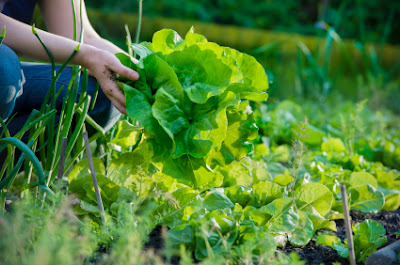The traditional kitchen garden, also known as a potager is a space separate from the rest of the residential garden and typically located just outside the kitchen door. They are a source of herbs, vegetables and fruits, but are often also a structured garden space with a design based on repetitive geometric patterns.
Plants are chosen as much for their functionality as for their color and form. Often flowers (edible and non-edible) and herbs are planted with the vegetables to enhance the garden's beauty. Many are trained to grow upward. The goal is to make the function of providing food aesthetically joyful!
Potagers can disguise their function of providing for a home in a wide array of forms—from the carefree style of the cottage garden to the formality of a knot garden.
 |
| the carefree style of the cottage garden |
 |
| the formal knot jardin potager |
If you're ready to start designing, keep these ideas in mind -
Choose a plot close to the kitchen, taking into consideration the sun and direction. Most herbs, veggies, and fruits require six to eight hours of sun a day.
Consider the overall design. Any pattern is possible—spiral, checkerboard, wagon wheel, you get the idea.
Arrange beds around a central focal point; I love the idea of a fountain in the center, but a large urn, planted container or bench would be lovely.
As the season progresses and plants grow, the outlines of your beds will evolve.
Plant species you use in your cooking, but be sure to mix in some new choices.
Potagers are essentially tapestries of colors, shapes and texture. The interspersing of herbs, flowers, and fruits with vegetables requires careful placement of perennials so that they do not interfere with the growth of seasonal crops.
Plant small fruit trees at the edge of the potager, along paths and walls, with strawberries, annual herbs, or flowers planted at their feet.
Underplant with chamomiles, thymes, sweet woodruff, and ground creepers to discourage weeds from growing and, well, yum!
Border beds with chives, alpine strawberries, nasturtiums, sweet woodruff, or mini basils, making certain to contain aggressive herbs like mint or tansy.
A good design includes vertical accents. These can be temporary (a stand of corn, tomato towers, bean tepees), or permanent (berry bushes or a small apple tree).
la chasse au bonheur










